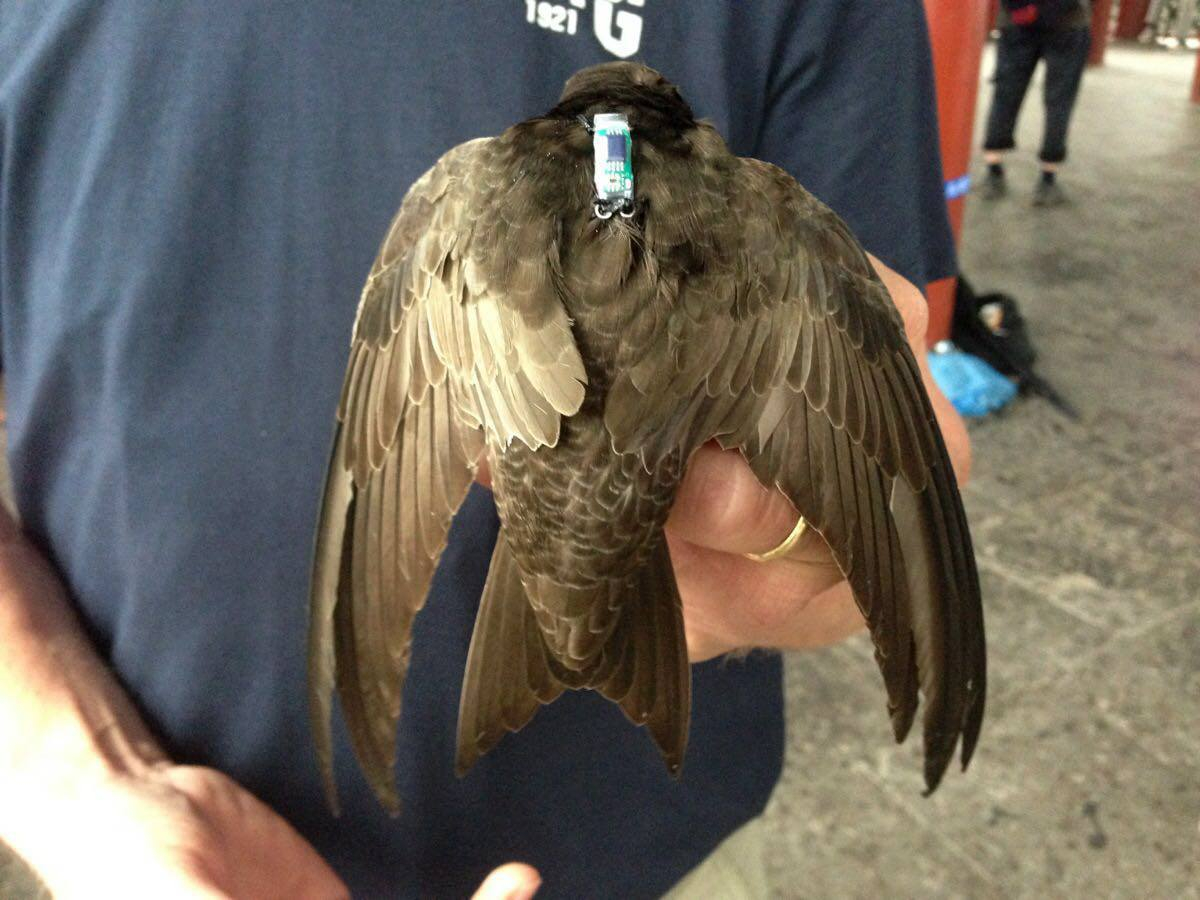
Animal
16:58, 13-Apr-2019
Welcome home, Beijing swifts
By Xing Fangyu

Chinese people have a strong homeland feeling, same as the Beijing swifts.
After 16,000 miles of round trip migration, these black-brown feathered birds fly all the way to southern Africa for winter and back to Beijing in the following spring to breed their birdies. The first report of Beijing swift this year is on April 1. And now, more and more birds are coming back to their native city.

The latest migration route of Beijing swifts. / Lyndon Kearsley graphic
The latest migration route of Beijing swifts. / Lyndon Kearsley graphic
Incredible bird, unbelievable journey
The Beijing swift is tiny but incredible. It can eat 7,000 insects a day. And the way it travels over a lifetime is enough to make it halfway to the moon.
“Birds are incredible, they make unbelievable journeys,” said Terry Townshend, founder of Birding Beijing. He believes that both the Beijing swift and Beijing cuckoo should become “ecological protection ambassadors” for countries and regions along the Belt and Road Initiative since their migration routes cover most of the countries.

Swift with a “backpack” geolocator attached. /Terry Townshend Photo
Swift with a “backpack” geolocator attached. /Terry Townshend Photo
Terry also thinks Beijing swifts fly to South Africa and back to China without landing. They simply fly around for several months before heading back to Beijing. He hopes to prove it in upcoming research.
There's a new technology called an “accelerometer” to record the motion of the bird. Terry said, “If we can fit some of the Beijing swifts with this technology, and catch the same birds again a year later, we will be able to prove they stay in the air for the whole time they are away from Beijing.”
The witness and the fittest
The swifts have witnessed Beijing's historical changes since they started nesting in the original city gatehouses and palace eaves in 1417. But the decline of ancient architectures and the development of a modern city have caused many birds lost their home. And some measures intended to protect the ancient architecture also bring harm to the Beijing swift.

Swifts like old buildings as they have lots of holes for nesting. /VCG Photo
Swifts like old buildings as they have lots of holes for nesting. /VCG Photo
However, birds know how to adapt to the new environment. According to Shi Yang from the Beijing Wildlife Rescue and Rehabilitation Center, the survey in 2018 has shown that the distributions of the swift in both ancient architectures and modern buildings are equal, which means birds are fitting themselves to the urbanization.
“These years some spreads about the number of Beijing swift is declining is actually lack of data support. So we are planning a long term survey to build our database, hopefully, we can find the problems and solutions for Beijing swift,” Shi Yang said.
This year, 80 volunteers have been called by the center to conduct a new study about Beijing swift's numbers and distributions. Both citizens and birds are going to have an amazing summer in this historic capital city.
(Cover image via Zhang Weimin)
(If you want to contribute and have specific expertise, please contact us at nature@cgtn.com.)

SITEMAP
Copyright © 2018 CGTN. Beijing ICP prepared NO.16065310-3
Copyright © 2018 CGTN. Beijing ICP prepared NO.16065310-3